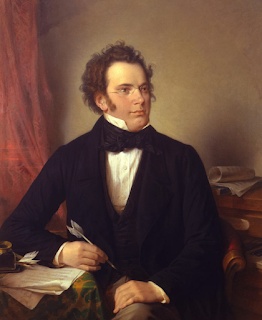Largely comfortable and familiar classics were on the menu at tonight’s Cleveland Orchestra concert at Severance, featuring guest conductor Philippe Herreweghe and, in the Haydn, cellist Jean-Guihen Queyras.
In 1950, Leopold
Stokowski traveled to Cleveland for his overdue debut here. At the first rehearsal, as recalled by
assistant conductor Louis Lane, a few comments from Stokowski about bowing and
attack were sufficient that, after 15 minutes, the orchestra’s sonority was transformed to sound like the Philadelphia Orchestra, circa 1936. 74 years later, Herreweghe has managed to do
the same – in the opposite direction: I have never heard the Cleveland
Orchestra play with such inexpressivity.
The concert
began with a rushed, dynamically constricted rendition of Beethoven’s “Egmont”
Overture. The reduced string section
here robbed dynamic climaxes of what Beethoven certainly intended as a dramatic
effect, and the lack of string vibrato left much of the work sounding
uncharacteristically anemic. It almost seemed
as if I was listening to an overly filtered, old mono recording of the
orchestra. Egmont was composed as
incidental music for a play by Goethe about Lamoral, Count of Egmont, whose rhetoric and subsequent execution helped rouse his countrymen to overthrow Spanish invaders and form an independent Netherlands. A heroic tale. But in Herreweghe’s hands, the overture was
more incidental than heroic.
Haydn’s Cello
Concerto in C major, composed in the 1760s, then lost until its rediscovery
in 1961, proved the high point of the evening. One could take the cellist’s technique for
granted, particularly his navigation of the finale’s rapid passagework in the
instrument’s treacherous upper range.
Then there was his tone, which was lean yet full, lyrical yet not
syrupy. Best of all, Queyras brought tasteful
expressivity and a joyous sense of communicativeness to the solo part – while always
blending with the ensemble. This performance
received the warmest applause of the evening, and Queyras responded with a
double encore: a Bach prelude preceded by a brief Ukrainian folk song – a poignant
reminder that Russia’s brutal invasion of Ukraine began two years ago
today.
Beethoven’s
Sixth Symphony, was subtitled by the composer himself: "Pastoral
Symphony, or Recollections of Country Life." It is in five movements instead of the
customary four. I’ve loved this work
since the first time I heard it, at the age of 14. The opening movement, depicting the “awakening
of cheerful feelings on arrival in the countryside”, was brisk – as if the
composer was in a hurry to get out of Vienna.
The second movement, titled “Scene by the brook,” fared better – the reduced
strings making it easier to hear contributions from the winds – particularly the
nightingale, quail, and cuckoo that Beethoven ingeniously wrote into the music. This was
followed by the villagers’ dance, which resounded with merriment – the high
point of the performance. The fourth
movement’s storm was not cataclysmic, just some rain and a few minor flashes of lightning, followed by a noncommittal song of Thanksgiving. The main floor of the hall appeared to be at
about two-thirds capacity, with a few people leaving during the final movement,
and many more not bothering to join in the applause after the Symphony’s conclusion.





